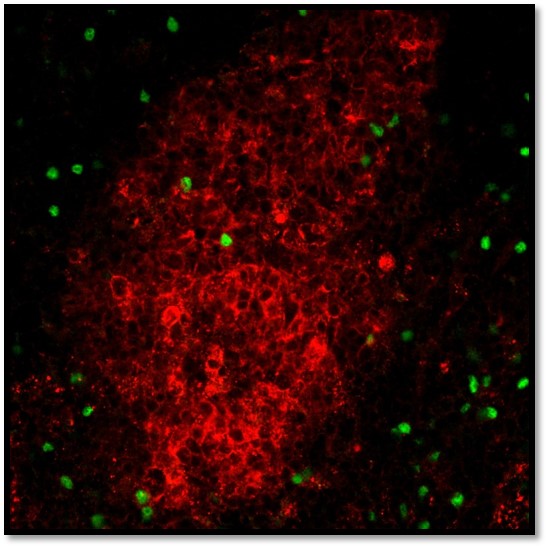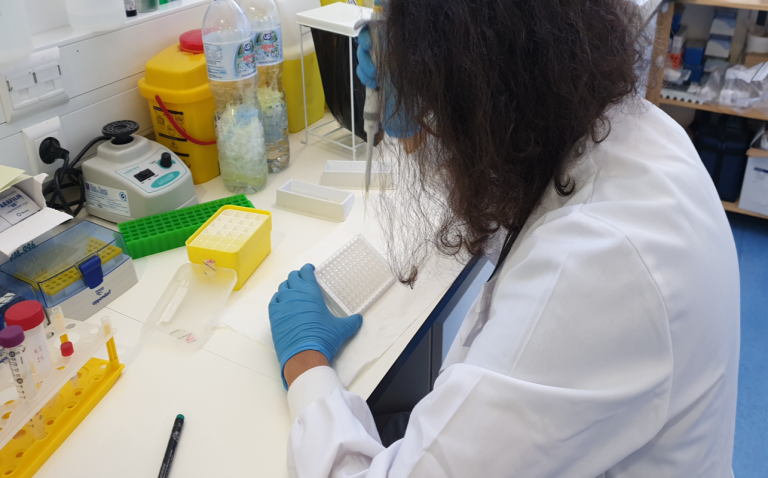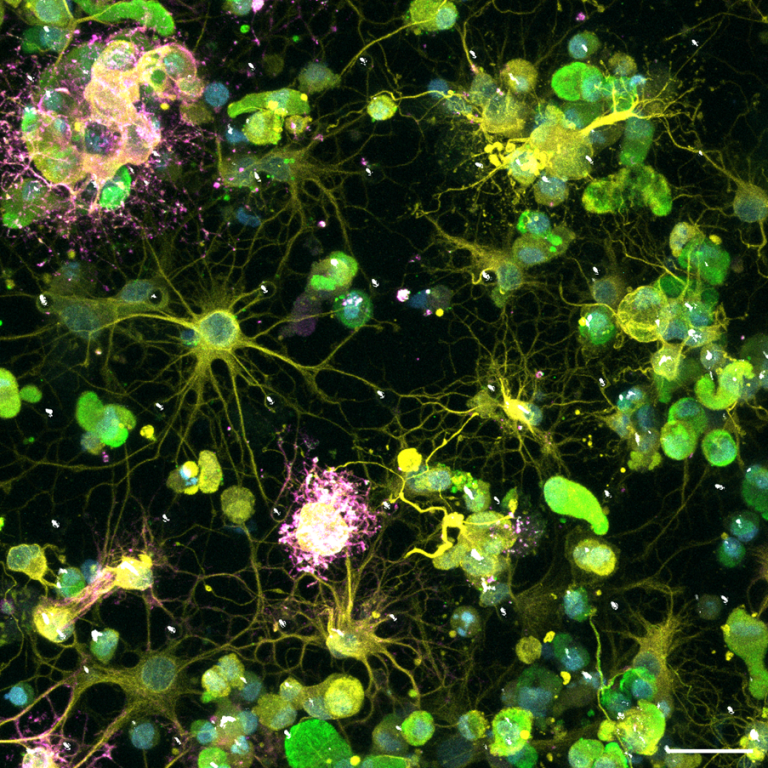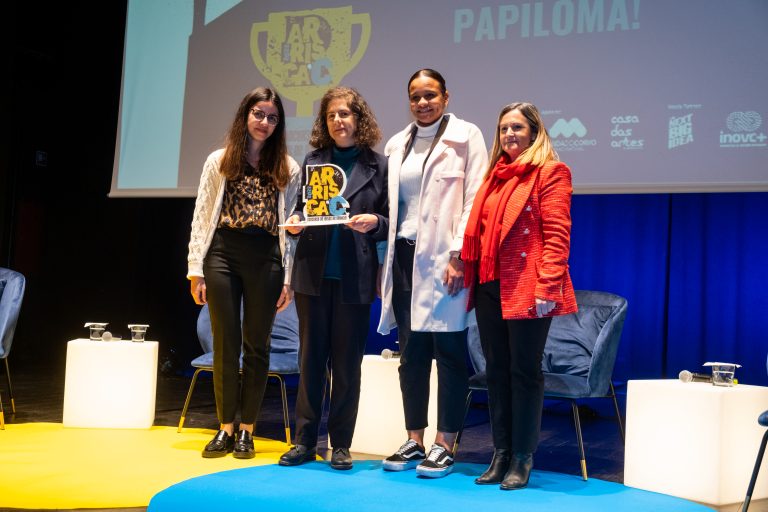The projects we will present here share two common traits: they were supported by the UT Austin Portugal Program, as exploratory projects, and they started from the conviction of researchers who, believing in the potential of their ideas, seized the opportunity and advanced their research. Even if preliminary, the results achieved allowed to validate ideas, consolidate knowledge and promote the submission of new proposals for funding under other sources.
We challenged five researchers to tell us the story behind said projects: from the original idea to the results they achieved gradually – which inspired new proposals and even helped advance patent applications. They also told us how the UT Austin Portugal Program provided good opportunities to get in touch with other research groups, namely at the University of Texas (Austin), and how the joint promotion of projects and the exchange of knowledge and experiences contributed – and still contribute – to advance their work. We went on a journey that took us from nanotechnology to advanced computing, and we were left with one certainty: ideas are the starting point, but the answer to social challenges and the generation of science with impact is motivation.
The first step
Since 2018, the UT Austin Portugal Program has allocated roughly €21.8M to fund exploratory and industrial research projects. The industrial sector also participated with €2.1M, namely in terms of R&D co-promotion projects launched for the first time in 2019, under the International Partnerships by the Portuguese Foundation for Science and Technology (FCT). In all, and since its establishment in 2007, the Program has supported more than 80 projects along the value chain. In the case of exploratory research projects, the objective of this international partnership, funded by FCT, is to support joint research work between teams of non-business entities from the Portuguese technological and scientific system and teams from the University of Texas at Austin. This transnational collaborative work consists of scientific projects considered disruptive, with a high potential for progression and impact, but also a certain degree of risk. The DREAM, Electrowave, MECHANO, ACT-PM and ImmuneNanoVac projects are good examples. Evaluated by independent scientific panels who then recommend them for funding under the Program, these projects had such promising results that they encouraged research teams to follow up on the work at hand, capturing new competitive funding inside and outside the Program.
Before we share some of these results, let’s focus on the projects’ kick-off. How did the ideas and the possibility of submitting a joint proposal with US researchers come about? In the case of Electrowave, which was selected in the Exploratory Research Project Call (ERP 2017), Ana Moita, head researcher of the project in Portugal, told us that it all started with a contact by Vaibhav Bahadur, researcher and professor at UT Austin’s Cockrell School of Engineeering. Bahadur was interested in the work that Ana’s research group was developing in the areas of electrostatic actuation and cooling systems, using fluid phase change. “Professor Bahadur was very excited about the possibility of funding under this Program, since he believed – which we confirmed with this experience – that the Program was an excellent opportunity to develop innovative and well-structured concepts”, mentioned the researcher from IN+ – Center for Innovation, Technology and Policy Research (Instituto Superior Técnico). “We decided to embrace the challenge presented by the Professor, and it was relatively easy to establish synergies and complementarity between our research group and the team at UT Austin”, she added.
In the case of the MECHANO project – also from the ERP 2017 -, the experience was different. Ana Pêgo, head researcher of the project, mentioned that she met Laura Suggs, researcher and professor at the Cockrell School of Engineeering during a visit to Austin. At the time, Ana was working with a student on developing an in vitro model that would allow her to mimic the brain and understand the cellular response to changes of the brain tissue mechanical properties that occur as a consequence of multiple sclerosis. “Thanks to the funding allocated by the UT Austin Portugal Program, I had the opportunity to visit the University of Texas, where I met Professor Laura Suggs. Laura was working with the same material as me: alginate – a type of sugar that enables the development of a matrix that simulates the extracellular matrix. Laura was working on something quite interesting. She had a model that could stiffen or soften the alginate, quickly, using nanoparticles and liposomes. In this sense, it was a good opportunity to generate sinergyes. We were developing the models and Laura had access to a technology that enabled fast stiffness changes. The Program became an obvious option to advance this collaboration opportunity”, explained the researcher of the Instituto de Engenharia Biomédica (INEB), who joined Suggs, Head Researcher of the MECHANO project at the North American university.

Luís Graça, a researcher at the João Lobo Antunes Institute of Molecular Medicine, also recalled that the ImmuneNanoVac project (funded within the scope of the 2021 ERP call) stemmed from the desire to test an idea that emerged from preliminary results of another research work. “The idea for the ImmuneNanoVac project derived from preliminary results of a collaboration between Professor Helena Florindo’s research group (Research Institute for Medicines) and my own research group. The Professor was interested in studying the anti-tumor effect of certain nanoparticles, and there was reason to believe that said nanoparticles could enhance the humoral response that leads to the production of neutralizing antibodies, further adapted for vaccination purposes. Therefore, we decided to seize this opportunity by the UT Austin Portugal Program to verify whether the idea that emerged from these preliminary results was realistic, and whether it was worth investing effort and transforming it into a project – in collaboration with Professor Nicholas Peppas’ research group (Austin)”, said the researcher leading the ImmuneNanoVac project.
Promising results
To the three projects mentioned above – which aimed to study cooling systems in electric motorization, the mechanical properties of the brain (particularly in multiple sclerosis cases), and nanoparticles to increase the effectiveness of vaccination among vulnerable groups -, we added two others: DREAM and ACT-PM.

Regarding DREAM, Carla Cruz, researcher at Health Sciences Research Center at the Universidade da Beira Interior (CICS-UBI), explained that what motivated the development of the project was the need to find a therapeutic approach, capable of helping women with precancerous lesions associated with the Human Papillomavirus. “This led to the idea of developing a formulation for a simple and topical application, capable of making a selective delivery and minimizing the side effects associated with the drugs used, the lack of selectivity and the chances of eliminating healthy cells”, stated the researcher.
The work carried out within the scope of DREAM, namely the development of gold polymeric nanoparticles – in which antiviral/anticancer drugs were encapsulated to combat cervical cancer cells and inhibit their growth -, showed promising results by enabling fundamental research and validating the application of the technology, thus encouraging the team to progress. “Although the results obtained in the DREAM project were very promising, we aimed to improve our therapeutic strategy to treat the infection when the virus is still latent. We decided to test new nanoparticles consisting of new nucleic acid aptamers and dual action drugs (anticancer and antiviral), capable of delivering greater amounts of drugs to the desired tissues, in a selective and effective way”, said Carla Cruz. The team also decided to focus on liposomes, “capable of delivering a greater amount of drugs and biopharmaceuticals, whose potential for clinical application is demonstrated, since they are the only nanoparticles available in the pharmaceutical industry”. Moreover, the group explored new formulations consisting of essential oils with antiviral/anticancer features. “We will develop a new strategy, affordable and with improved therapeutic potential, through the use of more effective nanoparticles and formulations with more promising constituents”, she mentioned, also explaining that the work progressed through the PAPILLOMA project – funded by the CENTRO 2020 Program, and supported by the ERDF and national funds.
From nanotechnology to advanced computing, we travelled to the ACT-PM project, which sought to develop techniques and tools for the evaluation and testing of Persistent Memory (PMem) applications. “The community realized that developing PMem applications correctly is extremely complex, leading to several issues that influence the correctness and performance of said applications”, explained Miguel Matos, professor at the Instituto Superior Técnico and researcher at INESC ID. In this sense, the project (part of the 2019 ERP call) laid the foundations of the research line in Persistent Memory, allowing to explore and develop various techniques to detect “bugs and inject faults in PMem applications”. The Department of Computer Science of the College of Natural Sciences (University of Texas) also participated in this endeavour.
In this case, the results were also quite promising, leading to the proposal of the Ainur project – funded by the Foundation for Science and Technology (FCT) – as a way to advance the research developed at ACT-PM. “During the Ainur project, we refined the techniques developed in previous projects, improving their precision, i.e., increasing the ability to detect a greater and more diverse number of bugs in applications; increasing their efficiency and scalability, i.e., ability to analyze larger or more complex programs, in shorter periods of time; and making them more generic to support a broader set of applications, with different programming and concurrency models, among others”, explained the researcher. According to Miguel Matos, the goal of this research work is to develop a set of easy-to-use techniques and tools that will allow PMem application developers to detect a substantial part of the bugs during the systems’ development phase.
Explore and verify ideas
Returning to Electrowave, Ana Moita explained that the project contributed to the development of a cooling evaporator, integrating modified surfaces, and efficient in nucleated and film boiling regimes. In addition, the research team was able to implement some of the knowledge acquired to propose a new way of manufacturing microcoolers – a solution that led to a patent application.
“The exploratory part of the project, which considered the use of nanofluids, was quite relevant. The research demonstrated that, in most cases, nanofluids stabilization issues do not allow the improvement observed in the heat transfer coefficients to compensate for the investment and effort required to implement the use of these fluids. However, the investment in new ones allowed us to develop nanofluids with interesting features, which are currently being tested and characterized for applications in the biomedical field, particularly microcirculation and hypothermia”, explained the researcher.
These results turned out to be the missing piece of gear to advance research in this area, demonstrating the potential for application of the (micro)cooling systems that the team had been developing. “With Eletrowave setting the tone for thermal management in electric monitoring, and underlining the relevance of thermal management of electronic systems – e.g., in this type of monitoring processes -, we feel compelled to finally prepare and submit the COOLSPOT proposal (funded by FCT)”, stated the researcher. In addition, Ana Moita explained that the Electrowave project “was particularly interesting”, since it allowed the team to expand the applications of nanofluid research, from the areas of heat transfer to other Biomedical Engineering fields.
Luís Graça, who promoted another project that led to several research initiatives, clarified that the main results obtained within the scope of ImmuneNanoVac confirmed that “nanomaterials are promising strategies to improve the humoral response, which leads to the production of antibodies in the context of vaccination”. Moreover, the research team was able to achieve preliminary results that explain “the mechanism that underlies the better efficacy of nanomaterials for the production of antibodies”.
According to the researcher, “the results obtained and the collaboration initiatives established were crucial” to take another step forward, supporting “a more robust project”, while exploring the best strategy to take full advantage of the use of nanomaterials to stimulate immune responses that lead to the production of antibodies. The researchers also wanted to observe if this was really a way to improve the effectiveness of vaccines among the most vulnerable populations, namely the elderly.
Hence, the work developed during the ImmuneNanoVac project moved into two directions. First, it led to a project that aims to advance the use of nanomaterials in vaccination, and whose work is still in an early phase; this initiative was promoted by Luís Graça and funded by the “La Caixa” Foundation. Then, it resulted in other projects led by Professor Helena Florindo, focused on exploring the use of nanomaterials applied to immuno-oncology, boosting the immune response against tumors.

Still in the field of nanotechnology, the MECHANO project focused on the use of nanoparticles to create a platform that mimics the brain extracellular matrix mechanical dynamics and allows researchers to understand what happens to brain cells affected by diseases – in this case, multiple sclerosis. Ana Pêgo stated that she experienced the lack of tools that could help her explore the questions she wanted to: why do diseases happen and what do they involve? “I started to think that I didn’t have methodologies to address these question; if we don’t understand what is happening, we can’t develop therapies”, she mentioned.
With some work underway to understand what happens in the human brain until multiple sclerosis reaches a critical point, Ana Pêgo managed (through MECHANO) to leverage the solution she was working on. “We know that our brain can recover from the insult until a certain point of the disease, until it reaches a period when the regenerative process stops. Our interest was to understand the changes that take place in our brain”. In this sense, the research explored the development of a tool to place cells in an extracellular matrix that would change their mechanical properties over minutes. In other words, the goal was to simulate the environment of the lesion to understand what influences the cellular response.
Despite the limitations associated with the COVID-19 pandemic, the team was able to develop the solution and the preliminary results were promising – to the point of making the model viable for studying diseases other than multiple sclerosis. “The preliminary results were vital to prove the viability of this platform, even for application to other scenarios”, said Ana Pêgo. Said results led to the STRESS project supported by the US Air Force Office of Scientific Research, and the development of another project – ASTROTECH – under the European Commission’s Marie-Curie training program – thus advancing the work of the researcher, who sees in nanotechnology not only potential for the development of tools, but also for therapeutics. “Nanotechnology provided me key-tools, which I’ve been exploring to understand how the brain works and even how therapies could be improved”.
Opening doors, promoting projects
All those involved in the projects supported by the UT Austin Portugal Program – Ana Moita, Ana Pêgo, Carla Cruz, Luís Graça and Miguel Matos – emphasised their exploratory nature as an asset, since it allowed them to validate ideas – leaving aside many others – and achieve results that paved the way to larger projects. “Said exploratory nature allowed us to test and evaluate the practicality and applicability of a diverse set of ideas and techniques. In the course of the project, we were able to discard some of these ideas, as they do not prove to be as promising as expected, while refining others that serve as the basis for the research we have developed since then”, explained Miguel Matos.
When questioned about the role of the UT Austin Portugal Program, the researchers also highlighted the possibility of collaborating with Texas research teams. “We’ve established vital relationships. Sometimes, after the projects, there may not be an immediate connection; but once we open that door, it remains open forever”, mentioned Ana Pêgo. Luís Graça has the same opinion: “without this Program, it’d have been very hard to establish these relationships, which ended up leading to crucial results. Without any motivation, it is difficult to bring people together”. The researcher also stated the opportunity to achieve “encouraging results”, thanks to the collaboration with different research teams.
“This Program has significantly improved our research work. Electrowave favored a meaningful collaboration between our research group and similar teams at the Faculty of Sciences of the University of Lisbon and the University of Minho, resulting in two subsequent projects, numerous joint publications, student training actions and a PhD, currently underway. Thanks to the relationships established within the scope of Eletrowave, we can provide short-term training programs, with student/researcher exchange between the laboratories of partner institutions. The protocol with the University of Texas also remained and, after the Eletrowave project, we have already submitted two more project proposals with Professor Bahadur and another national research group”, said Ana Moita.

“Thanks to the results obtained during the DREAM project, it was possible to present a Proof of Concept application proposal, which was funded with an initial technology maturity level of TRL3”, said Carla Cruz, referring to the PAPILLOMA project. “The PAPILLOMA proof-of-concept, the formulation and the placebo will be developed during the scaling-up phase, and the team will evaluate its reproducibility and carry out the chemical, physical, mechanical and biological characterization”, she mentioned, emphazizing that “the TRL desired with the proof-of-concept is TRL4, due to the fundamental research carried out during the DREAM project – funded by the UT Austin Portugal Program”.
This journey through several exploratory projects supported by the UT Austin Portugal Program, over the last five years, was quite long. Thanks to the Program’s financial support, and through the collaboration with North American research groups, several ideas developed into projects and knowledge generation. The results encouraged progress towards the discovery of solutions that can address issues affecting people’s daily lives, highlighting the importance of public funding for exploring disruptive science with high potential for innovation and impact.

